Are women safe in London at night?
Two years on from Sarah Everard's murder, with more government funding and initiatives, are London's streets any safer for women?
Image Credit: Colette Fountain
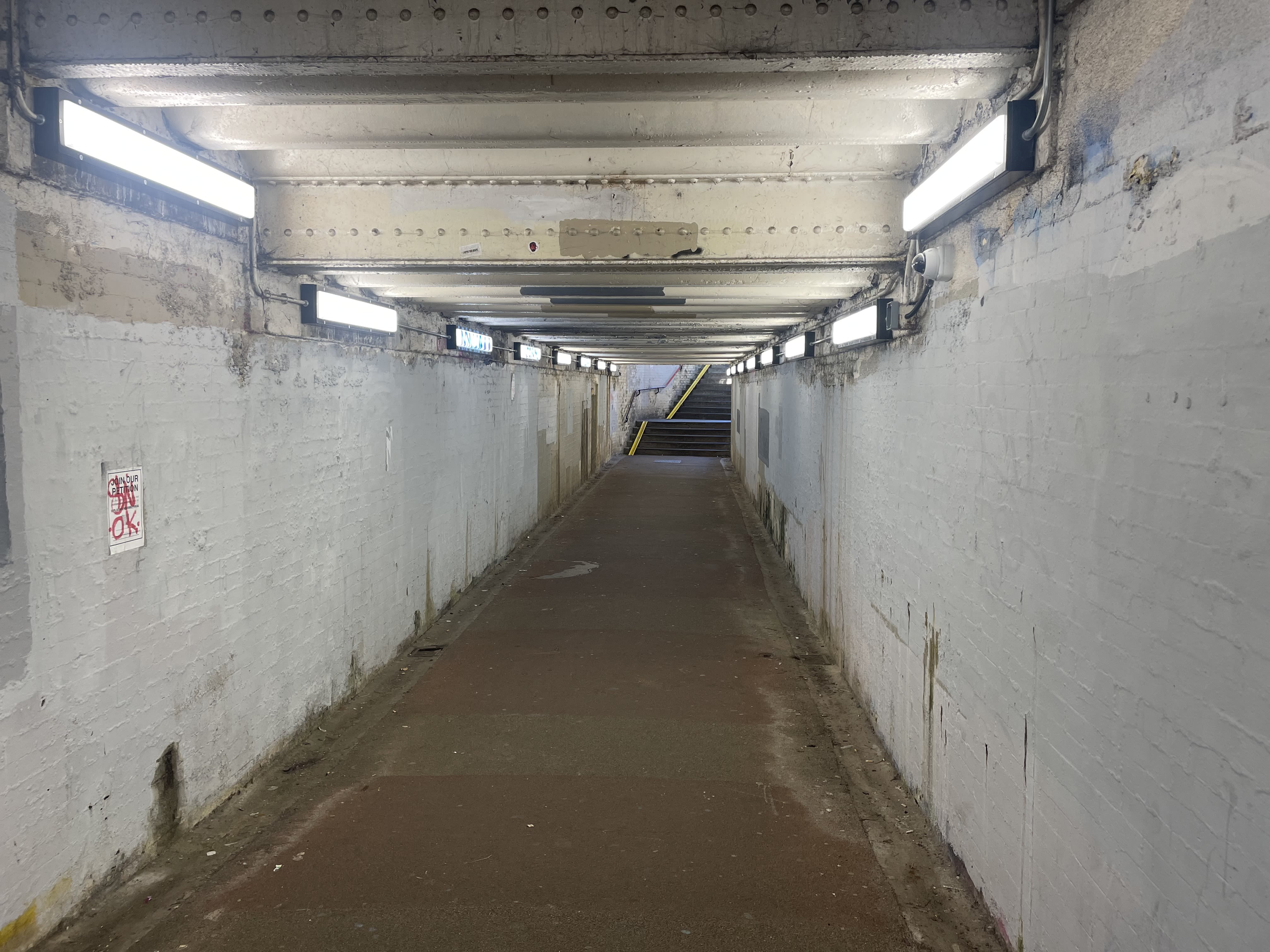
It's been two years since the killing of Sarah Everard by Metropolitan Police officer Wayne Couzens. He is currently serving a life sentence, having appeared in court earlier this year. He won't ever be released.
It's a rare example of a legal system succeeding. An even rarer example of a legal system succeeding in punishing one of their own. In legal terms it's closure. A happy ending given the awful circumstances. It's all part of the natural process of weeding out "a few bad apples". To them, Wayne Couzens is an isolated incident and so now that he's behind bars, we all move on with our lives.
Yet in the two years since Sarah Everard's death, the Metropolitan Police have faced increasingly horrific allegations about the cultures of misogyny and racism that persist among its workforce. Having attended a vigil for Sarah Everard on my university campus shortly after her death, I was saddened but not surprised at the endless line of women standing up to talk about their own experiences of violence and harassment. A report from the UN found that 71% of women of all ages in the UK had experienced some form of street harassment, while 97% of 18-24 year olds had experienced some form of harassment asked about in the survey.
So while the Metropolitan Police might like to pretend that denouncing anything to do with Wayne Couzens has fixed the problem, almost every woman will know that isn't the case.
Just one year on from her death, The Independent reported that 125 women had been killed at the hands of men. A few months after Sarah Everard's death, in September 2021, Sabina Nessa was brutally murdered in South East London. Like Couzens, her killer was given a life sentence. On the 1st of May 2023 Johanita Kossiwa Dogbe was stabbed to death in Brixton in a seemingly random attack by a man who has since been arrested.
These examples are not extensive. They don't accurately capture the grief and fear of the last few years as women's safety has reached the forefront of public discourse while seemingly remaining at the periphery of government policy. Every woman knows the fear of walking alone at night whether it's through a populated hub of nightlife or an isolated side road - it's inescapable.
Through data obtained from the Metropolitan Police detailing offences affecting women between 6pm and 6am broken down by borough across London, we're able to investigate whether women are any safer than they were two years ago, and whether the government and charity initiatives have truly made an impact.
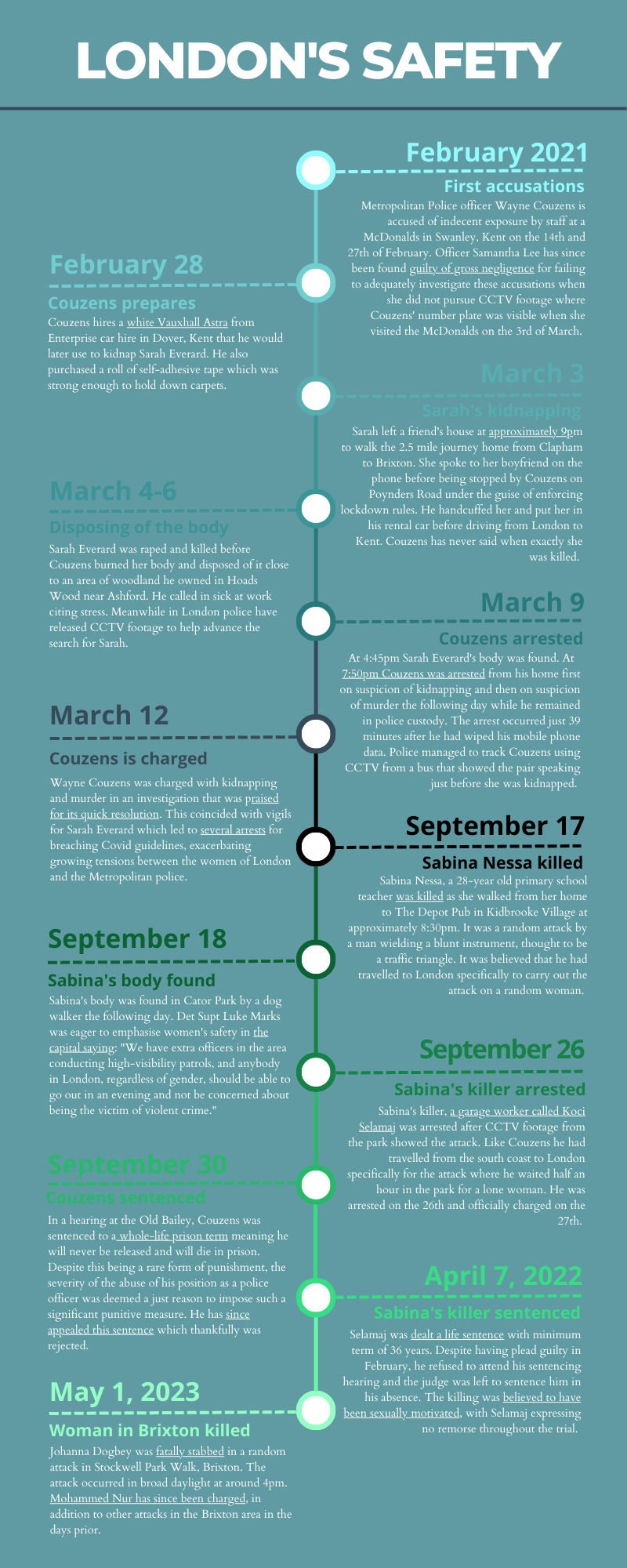
Let's look at the data
Total Number of Offences
The above map highlights the total number of offences over a five-year period beginning in April 2018 for crimes perpetrated against women on the streets of London between 6pm and 6am. In order to produce this map I totalled data for each borough of violent offences, robbery and sexual offences using data provided by an FOI request to the Met Police.
Unsurprisingly, the most affected areas are concentrated in central London, particularly the boroughs of Westminster, Tower Hamlets and Lambeth, all of which have experienced more than 2000 offences during this period. Despite having low-population density - a fairly significant factor in crime rate - Westminster is statistically the most dangerous borough for women at night, likely because it is an area with high footfall. The safest boroughs are concentrated in the South West, with Richmond upon Thames being the safest borough overall. Characteristically this aligns with typical expectations for a borough with low crime rates - generally low population density, strong relationships between residents and authorities and councils with the resources to focus on women's issues as these safer boroughs are generally higher-income areas.
A lot of the statistics align with what most people would expect, with more offences in the summer months and a general decline over the five-year period. The highest offence rate was in July 2018 with 1169 offences compared to just 280 in March of this year suggesting that the various measures that have been put in place must be having an impact.
It is very difficult to pinpoint this improvement to one specific solution because there have been so many initiatives to tackle Violence Against Women and Girls (VAWG) over the last five years. However, despite this improvement, a lot of women still feel unsafe. Statistically there is a discrepancy between actual and perceived danger or threat. The media attention around a case like Sarah Everard's hit so close to home for women because of the relatability of it - in some ways, it could have been anyone.
Sexual Offences
Sexual offences are less common than violent offences, however, they are also one of the most under-reported and under-prosecuted crimes. Again, central London has the highest rate of offences while Richmond upon Thames once again has the lowest rate of sexual offences closely followed by its neighbouring boroughs Kingston upon Thames and Sutton.
A pilot scheme was launched to combat VAWG in Southwark and Lambeth which reduced violence against women by 24%. These 'sexual harassment' police are trained in behavioural detection, part of counterterrorism which aims to monitor suspicious behaviour to prevent crimes before they happen. This also could raise concerns that corruption within the Met could be used to exploit the very women they are trying to protect.
Instead, police need to provide specialist training for officers to build greater trust between victims and authorities leading to greater reporting and hopefully eventual prevention of these offences. Women need to trust that they will be taken seriously by officers and that it will lead to some kind of punishment for the offender, something not currently happening as in 2020-21 only 1557 rapes were prosecuted out of the 67,125 reported to police.
Violence Against the Person
Violent crimes are by far the most common offence impacting women at night. It is also the crime with the biggest discrepancy across London's boroughs shown with Richmond's 507 offences and Tower Hamlets' 1802.
When tackling violence against women, most of London's charities are focused particularly on domestic violence. Rebecca Goshawk, Head of Public Affairs and Partnerships at Solace, highlighted the particular issues that might affect women living on the streets as they are forced to flee violence in the home, exposing them to more violent conditions on the streets.
Women living on the streets are more likely to be concentrated in the city's central boroughs as these have the most resources (though still exceptionally limited) which could provide some explanation for these high concentrations of violence.
These central locations will have the biggest nighttime economies where tourists and locals gather for food, bars and tourist attractions - a mixture of alcohol and masculinity which can put women at risk.
Policing Strategies
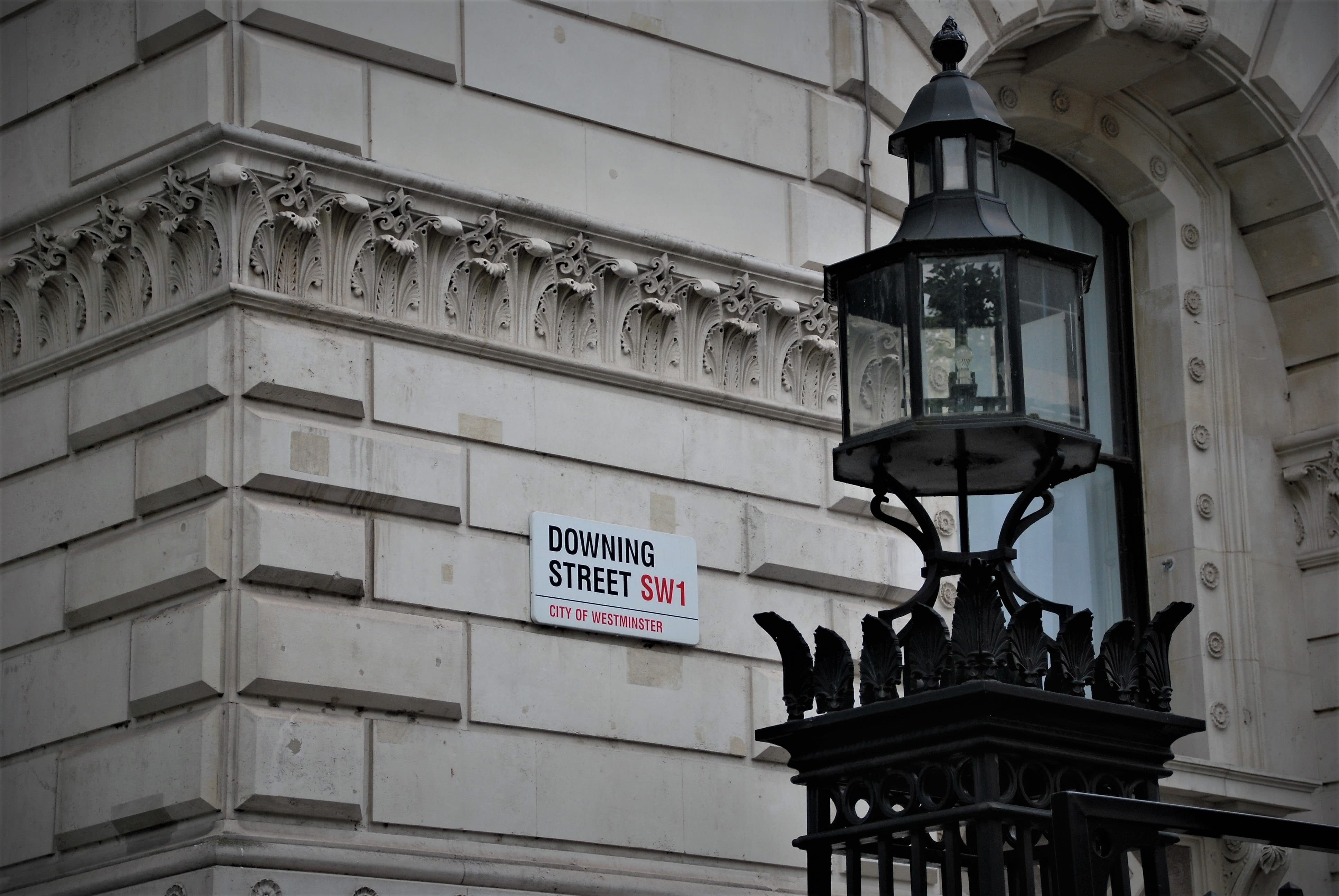
Police Presence
The Role of Visible Policing
Those with conservative beliefs generally support the idea that increased police presence acts as a deterrent. This has led to backlash from women's charities who do not recognise a significant correlation between policing and violence against women. This suggests that the immense amount of wealth put into funding the police is essentially a waste and these resources would be more valuable elsewhere. More significantly, women's trust in the justice system has been almost completely destroyed.
A recent report from the National Police Chiefs' Council found that more than 1500 UK police officers were accused of violence against women in a six month period with less than 1% of those officers being sacked. Earlier this year, David Carrick admitted to an additional six charges of sexual offences on top of the 43 offences he had already plead guilty to in December 2022. An armed officer in the Metropolitan Police's parliamentary and diplomatic protection command, Carrick's 71 serious sexual offences spanned a period of two decades. Carrick was first accused in 2000 before he joined the Met but was not properly investigated until 2019. He was finally suspended by the Met on the 1st October 2021 only after being charged with the rape of a 50-year-old woman.
This single example serves as a prime explanation for why women are so afraid to come forward about sexual assaults and why trust in the police has been so drastically eroded.
Data on the Met Police Force
The graph on the right shows both the budget and the police staffing figures over the last decade. The staffing statistics are reported on the 31st of March at the end of the business year while the budget is set on the 1st of April so for the purposes of the graph I have reported both of these statistics from the same year, rather than from the same business year.
The number of police officers has been steadily increasing year on year between 2019 and 2022 before dipping again in 2023. These statistics have remained upwards of 30,000 for the entirety of the last decade suggesting that police cuts have had no serious consequence on London's police presence.
Police funding has been steadily increasing since 2018. Increased budgets generally lead to increased staffing but these officers still might lack the specialised training needed to combat VAWG. While greater police presence can be a deterrent for criminals, it can also lead to additional issues like racial discrimination with increased stop and search.
Source: Home Office employment data, Statista
Solutions
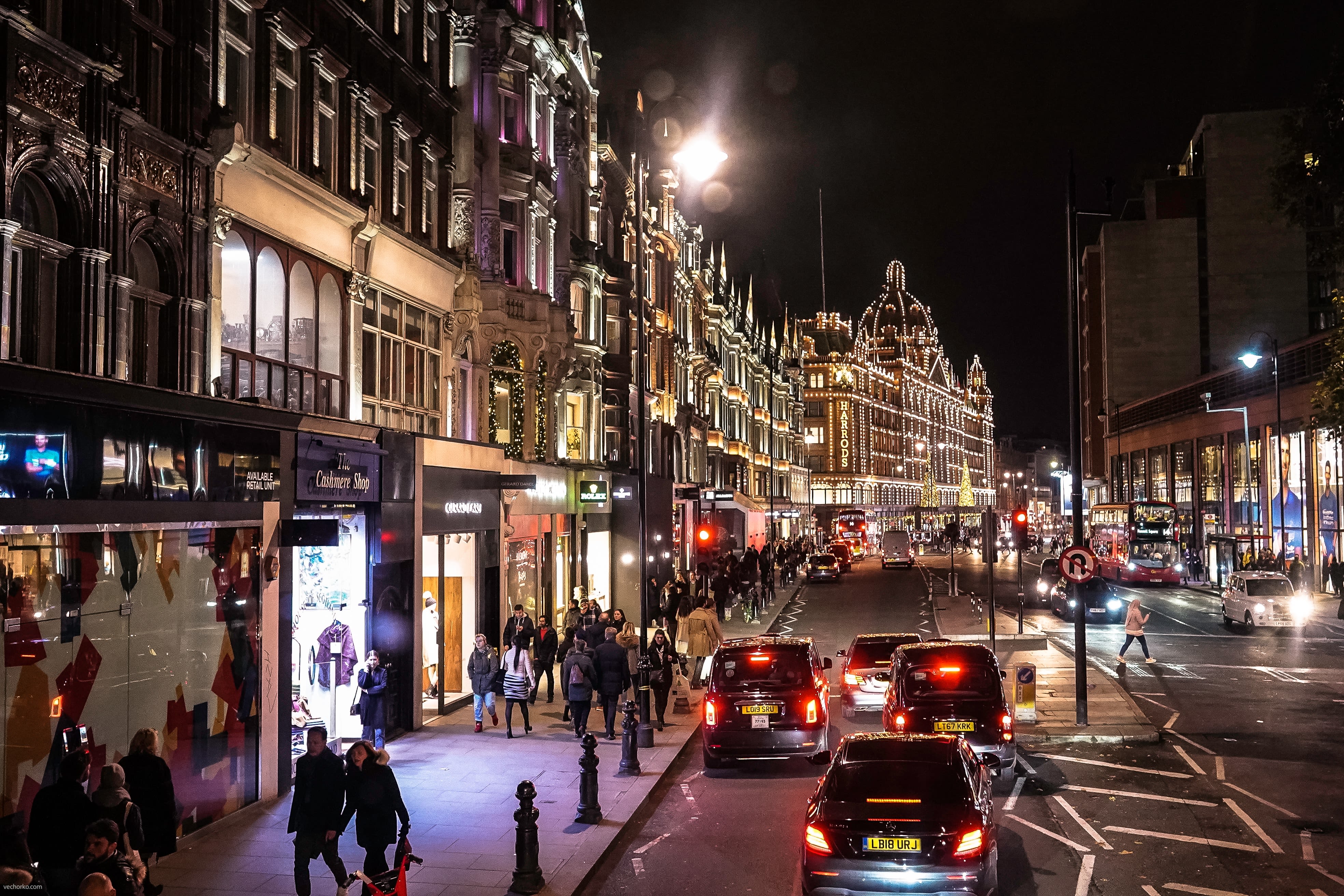
Sadiq Khan's Approach
Independently of the government, the Mayor's Office have introduced their own schemes to tackle VAWG, primarily focused on the night-time economy and safeguarding for women. Along with investing significant amounts of money in this scheme, Khan has prioritised working alongside businesses and organisations to create a safer London for the 1.6 million Londoners who work at night.
Reeling from the financial damage of Covid lockdown, Sadiq Khan made a pledge to fix London's nightlife. It quickly became one of his key policies, leading him to hire a dedicated Night Czar whose role is focused on improving London's night-time economy and safeguarding. These policies had a lot of overlap with Khan's determination to tackle violence against women and girls (VAWG) in the capital as it was becoming evident that women were particularly unsafe at night.
Since being appointed in 2016, Amy Lamé has never been far from criticism. From an NME article begging the question "What exactly is the point of you?" to criticism from London's constituents, even the title Night Czar seems almost comically light-hearted for a topic which evokes such intense discomfort among women.
An integral part of her role so far has been in championing Khan's Women's Night Safety Charter, a pledge-based initiative that aims to improve women's safety. The charter has been awarded extensive funding, reaching £60 million thus far, to a more recent £108,000 booster package. And in many ways it seems to be working: more than 400 businesses had signed up by 2021, a figure which had reached more than 700 by March of this year.
The program also recently expanded into the fitness industry as Battersea's The Gym Group became the first gym to sign up to the charter.
The charter can seem like a bit of an abstract concept - a list of seven pledges that businesses and organisations operating between the hours of 6pm and 6am agree to follow. This includes things like encouraging the reporting of harassment, providing dedicated training for staff, and creating a safe environment for staff and customers alike. I struggled to find anywhere on the Mayor's website to suggest how these pledges are verified for organisations that have signed up but I guess on the face of it, creating more safe spaces for women is obviously a good thing.
I spoke to Lamé, who said: "All women have the right to feel safe, secure and comfortable when working, travelling or going out in our city – regardless of the time of year or the time of day.
"We all have a part to play to ensure that is the case and the Mayor continues to champion a public health approach to end the violence and misogyny too many women face and build a safer London for everyone."
Image Credit: Benjamin Davies on Unsplash
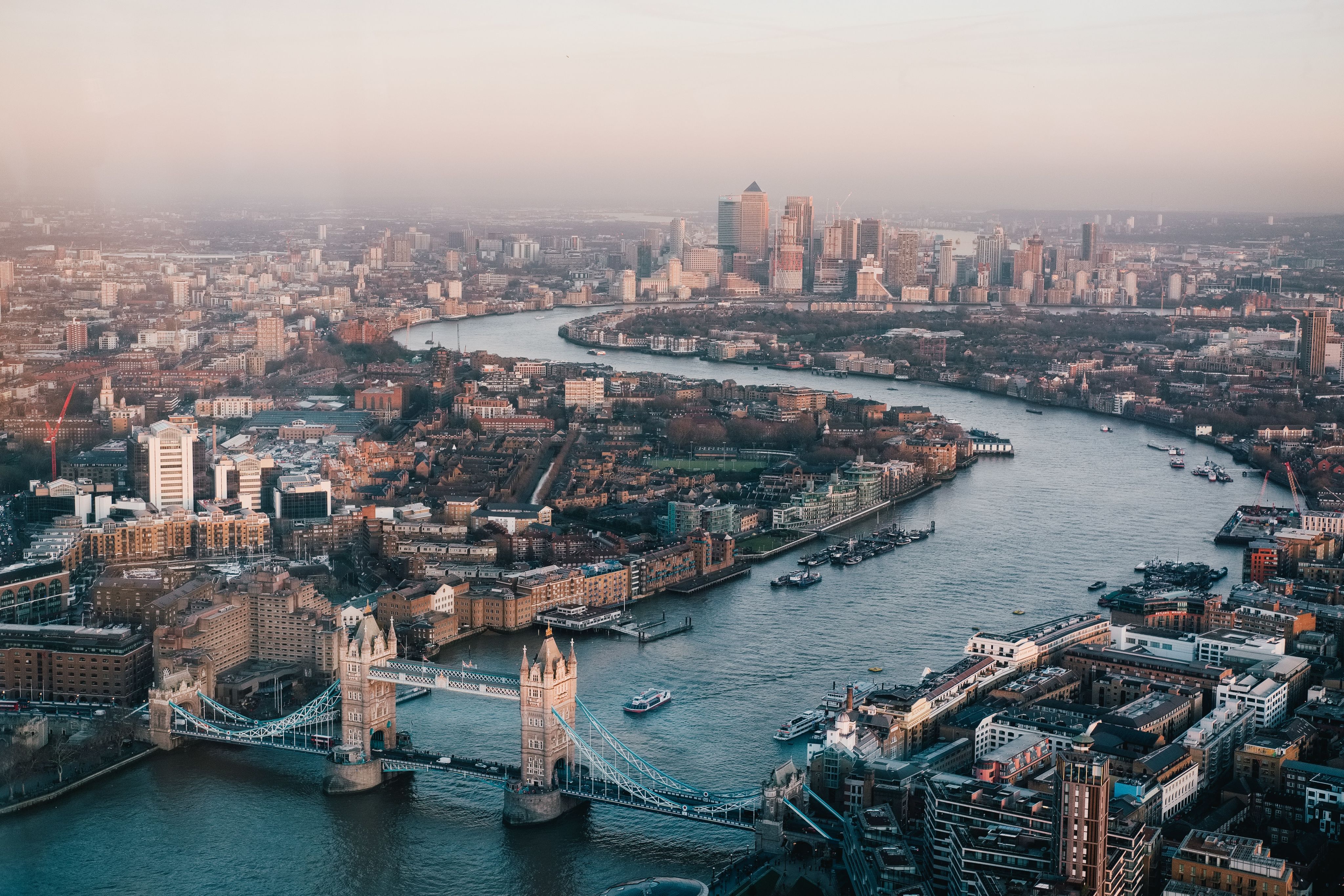
So what are some other proposed solutions?
Solace
I spoke to Rebecca, a representative from Solace to learn more about the work the charity does and how they feel violence against women and girls (VAWG) can best be tackled in London.
Solace is one of the UK's leading domestic abuse and violence charities which supports women across London. Last year they helped nearly 30,000 women and children across London as well as supporting over 1000 survivors in their refuges which cover seven boroughs.
They are particularly passionate about preventative measures, while supporting women who have experienced violence. They have a children and young people's team which aim to educate young people on what healthy relationships look like and how to recognise signs of abuse. They also have a 'Good Guys' campaign offering advice for men on how their behaviour can impact women with simple changes to make in public places to make women feel safer.
While they acknowledge that more police could have an impact, they see this as a short term remedial measure that fails to address the root causes of VAWG.
She said: "Long-term we want to see the cultures behind why male violence against women and girls happens being challenged and behaviour change, predominantly from men. For us, in terms of increased police officers, we worry if new officers are properly trained, or don't know how to respond to women reporting. It's not going to solve the problem, we need properly trained expert officers who really believe women, who will take them seriously and go down the lines of enquiry that mean they can create a credible case. To us, that's more important than more, that doesn't necessarily mean better."
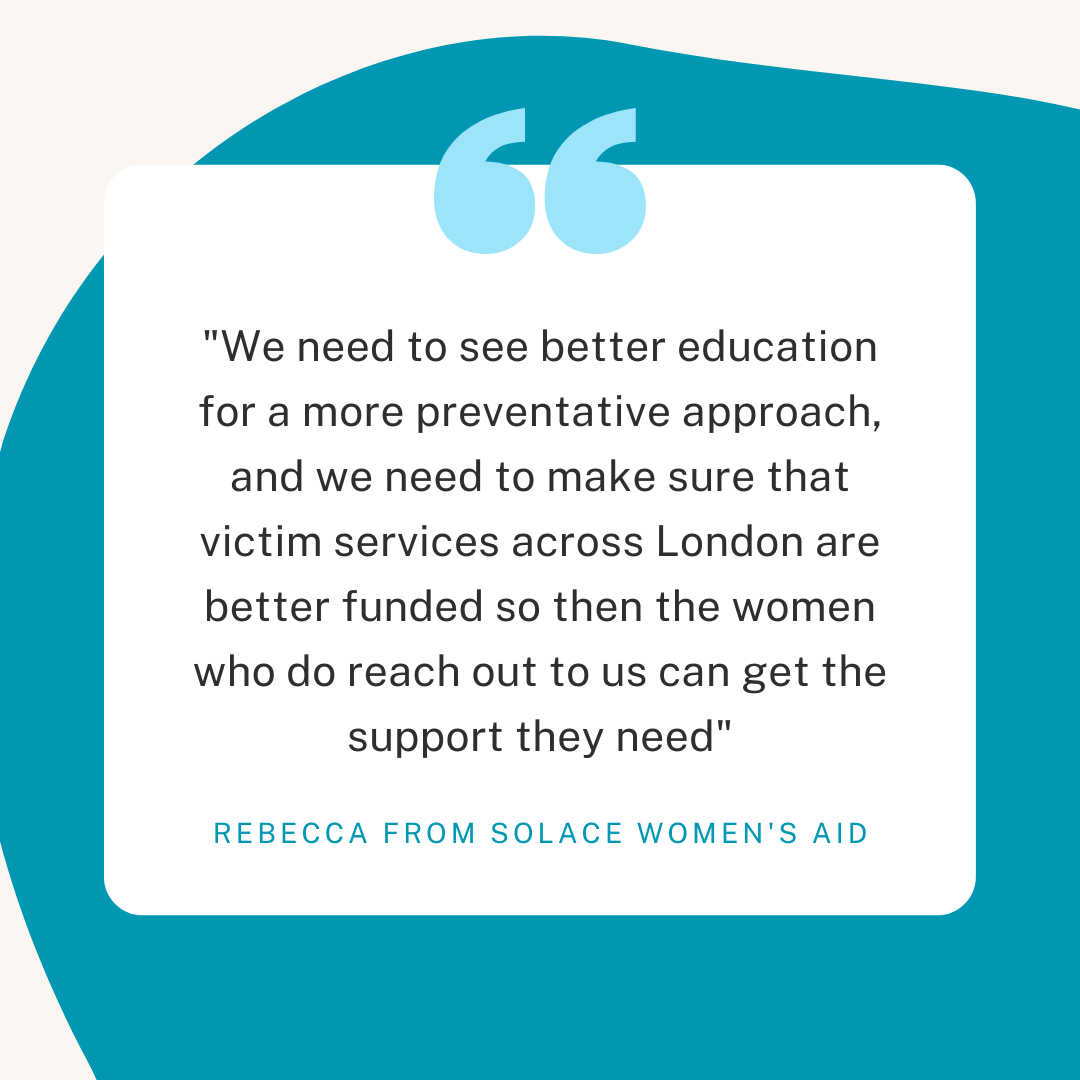
Night Czar Amy Lamé
As part of the Mayor's office, Amy's work is more focused on the night-time economy and women's safety more generally across London rather than the specialised work a lot of the charities do.
Nonetheless, women's safety seems to be high on her priorities as she said: "We're determined to make London the safest and most welcoming city in the world."
The Mayor has invested over £100 million in women's safety generally, with an additional £100,000 being provided to continue the success of the charter. For more localised issues, Lamé said: "That includes producing world-leading guidance for councils to develop Night Time Strategies that support the needs of their areas."
A £1m toolkit was created for secondary schools across London to help pupils recognise and tackle misogynistic behaviour, in addition to a £17.7m investment in support services to rebuild trust between victims and the justice system.
In terms of tackling the root causes, Khan has launched his #HaveAWord campaign which encourages men to call out misogynistic behaviour in their peers. Lamé said: "Data shows that low-level misogyny is often a precursor to more violent crimes being committed against women, so we need to tackle the root causes and ask men to be better allies to help tackle the epidemic of violence against women and girls."
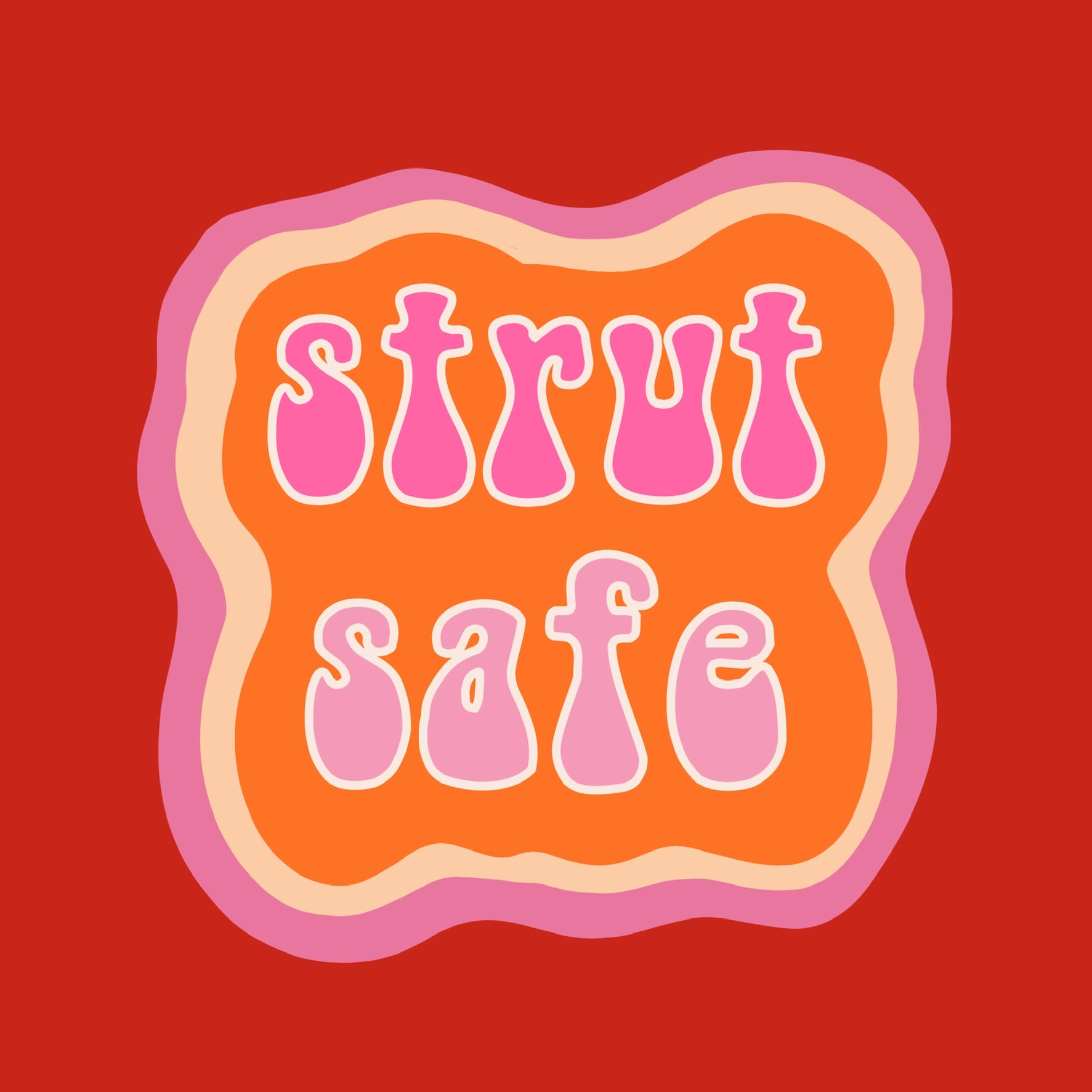
Strut Safe
Strut Safe is a free, volunteer-led support line which runs across the UK on Fridays and Saturdays from 7pm - 3am and Sundays from 7pm to 1am. They aren't aligned with the police, policing or carceral punishment, instead offering an independent, friendly phone line for those alone at night.
Not only can phone lines like this act as a deterrent for would-be offenders whose crimes would instantly become more accountable but it can also be incredibly valuable in helping reassure women on the streets at night.
The organisation is currently accepting donations to expand the service. While this is not a remedial solution, it can be reassuring for women to know that there is a support system out there and that there are others willing to help, even if it's just someone at the other end of a phone call.
Image Credit: Strut Safe PR
End Violence Against Women
End Violence Against Women (EVAW) takes a much broader approach compared to other charities which tend to focus on just one element of violence against women, whether it be domestic abuse, homelessness or violence on the streets. This holistic approach suggests that violence against women is not an issue of specific cases but instead must be eradicated as a whole if the problem is to be fixed.
They work particularly hard as a campaigning group, aiming to "transform the social and political systems that enable violence against women by campaigning, shaping policy and challenging the attitudes that normalise abuse." This involves taking an intersectional approach as they are particularly conscious of the knock-on effect that some of these policies may have on marginalised groups, releasing a response to the government's Safer Streets policy which highlighted the potential for increased racial discrimination in the city through this scheme.
Some of their campaigns include tackling VAWG in schools, having previously successfully campaigned for Relationships and Sex Education to be mandatory in schools. Other campaigning involves trying to undo online misogyny, and doing work with football communities to hold accountable an industry which often protects / mitigates the backlash against abusers.

Respect
In contrast to the majority of these charities and programs which work with women who have experienced victims and young people on educating them about misogyny, Respect centres a lot of their work on addressing the root issue: male violence.
They run a helpline which allows men who have acted violently or exhibited these behaviours to self-report and receive the help that they need to undo this aggression.
They work alongside other organisations to provide advice on how best to tackle male violence, with 39 organisations currently living up to the Respect Standard. Some of these organisations include CLEAR, Make a Change and the Drive Partnership which focuses on high risk, high harm perpetrators.
While the work they do is often reliant in part on men being willing to hold their behaviour to account in self-reporting, this can be very valuable in undoing a lot of harmful belief systems that lead to male violence.
Additionally they offer support for male victims of domestic abuse, something often overlooked by councils and charities, with their Men's Advice Line.
Image Credit: Respect PR
Case Study: Richmond upon Thames
According to crime data, Richmond upon Thames is the safest borough in London. This is no different for the statistics affecting women as it was shown to be the overall safest borough with just 575 offences over the most recent five-year period. For each offence (violence, sexual offences and robbery) it had the lowest, or one of the lowest, number of offences.
While this can partially be credited to the general characteristics of the area - low population density, largely high-income jobs, and strong relations between authorities and residents, the Lib Dem-led Richmond Council has made women's safety one of the top priorities of their work.
I spoke to Lib Dem Councillor for St Margarets and North Twickenham Ben Khosa about the work he has been doing to improve women's safety in the area and what he hopes for the future of the borough. Khosa had been living in the borough since 1985 before becoming a councillor in 2006 with a particular focus on community work and women's safety. I also spoke to Miranda Hibbert, Vulnerabilities Manager, who has worked alongside Councillor Khosa for a lot of the work championing women's safety.
Richmond Council is White Ribbon accredited, meaning it has shown significant commitment to combating VAWG, with Councillor Ben Khosa becoming the 'White Ribbon Champion' for the borough.
Prior to becoming accredited, about 15 years ago, Khosa worked alongside other council officers and volunteers to go to Twickenham Stadium to encourage some of the 80,000 spectators to sign up to the White Ribbon promise.
The accreditation finally came in November 2021 as part of an overall council strategy to continue and focus on the fight against VAWG.
Richmond Safe Space has been one of the biggest triumphs of their work, beginning last summer as a trial until Christmas before being green lit for another full year with the hopes of it becoming a permanent fixture.
The tent, located outside Richmond Station, has benefited scores of residents with ad-hoc and proactive interventions. Miranda said: "Really the untold success of it is the impact on women waiting for buses. I had a lady when I was there who lived in Sheen but chose to get the train to Richmond to wait with the safe space for a bus that took her to her door rather than walking from Sheen Station because she felt safer."
Councillor Khosa added: "A number of times passersby would report something there. Some serious interventions have had to be made by the police in certain incidents which would not have happened if the tent wasn't there."
It's a scheme that other boroughs have sought to replicate but Richmond was the champion for this kind of visible activism against VAWG.
When asked about the factors that affect women's safety in Richmond, Khosa said: "Street lighting generally is a good thing, and policing of course - visible policing. Interventions like the council is doing now with the White Ribbon campaign, they help, as do other organisations who engage in this kind of work."
Miranda was keen to highlight some of the complexities that can go into tackling VAWG, as things like street lighting can often be seen as an easy solution. When speaking about localised issues Lamé said that increased understanding of local areas can help councils respond appropriately, for example: "improving the design of lighting in key streets and spaces."
Yet Miranda pointed out that with areas like Richmond Green, it isn't always as straightforward as installing more lighting. She said: "Lighting is a really interesting point because we do generally have a well-lit borough but the question always gets raised of if an area feels unsafe why do we not just put more lighting there? Unfortunately you can't just put lighting somewhere to create the illusion of safety, you have to make somewhere safe beforehand which is done through partnership work and through having people on the street with things like the safe space to create a visible presence of British Transport Police, or the Met Police."
Richmond Council is also doing work to try and improve relationships and trust in policing authorities who have come under fire for their misogynistic workforce.
Through police-liaison groups which aim to engage the community, the residents are able to decide on local policing policies, as the council respond accordingly to feedback. After realising that residents wanted improved VAWG action, the council requested government funding for the White Ribbon campaign. This was refused, leading it to invest its own money because of its belief in the importance of this work.
It has also set up schemes like a One-Stop Shop in Hampton which runs weekly and has specialists offering advice on housing, policing, legal issues and anything else residents might need. Regarding housing, Richmond Council is Domestic Abuse Housing Alliance accredited with a dedicated Housing Champion to ensure that they prioritise women's safety across all issues within the borough.
A dedicated Community Safety Officer works alongside Councillor Khosa to implement a lot of these schemes. She has helped to lead White Ribbon marches with Councillor Khosa, attends pub watch and ensures that Ask for Angela (a scheme for women to discretely alert staff to unsafe situations) is properly implemented. Additionally she does training for the community on how to be an active bystander, taking a more pro-active approach alongside some of the remedial measures offered by the council as Councillor Khosa is committed to offering wrap-around welfare provisions whenever needed.
For young people within the borough, they have facilitated the training of 200 teachers across the borough on how to spot signs of stalking and harassment. They also engage with Richmond College and other schools to deliver this training. A week-long event with the Brentford Kicks in Hampton provided a range of activities from football training to professional VAWG training. A theatre company delivered a performance entitled 'Calling it Out' to further educate young people on healthy relationships and sexual harassment.
Councillor Khosa also led the council's efforts as part of the UN's 16 days of activism which is a combination of events, awareness raising and training inside the council and in the community, all with the end goal of improving the safety of women in the community.
Obviously the ultimate hope is for VAWG to be entirely eradicated but in the meantime the Council, and Ben Khosa in particular, is working hard to offer solutions and remedies in any way they can. This primarily means raising awareness in the community as a way to tackle behaviour and beliefs.
Image Credit: Councillor Khosa and Miranda Hibbert for Richmond Council
Future Priorities
I think what is clear from talking to a range of different charities and organisations is that no one really knows what the answer is - a lot of these proposed solutions are difficult to quantify or prove with any tangible success rate. Instead, the only solution for tackling VAWG seems to be an entirely-holistic approach to fight it from all angles. The one thing that most groups do seem to agree on is that increased policing is not always the best solution but rather improved training for police would be better. This means specialised units equipped to deal with these nuanced issues.
On top of this we need basic amenities: safe spaces for women, better lighting, better education around who to go to if you've been the victim of, or witness to, a crime. But most of all we need to do a better job of addressing the root cause. This is some of the hardest work for these charities to do but it shouldn't be left to the responsibility of organisations. It means calling out friends for casual sexism, it means teaching boys early on in schools, and it means regulating forums and social media to remove misogynistic language efficiently.
